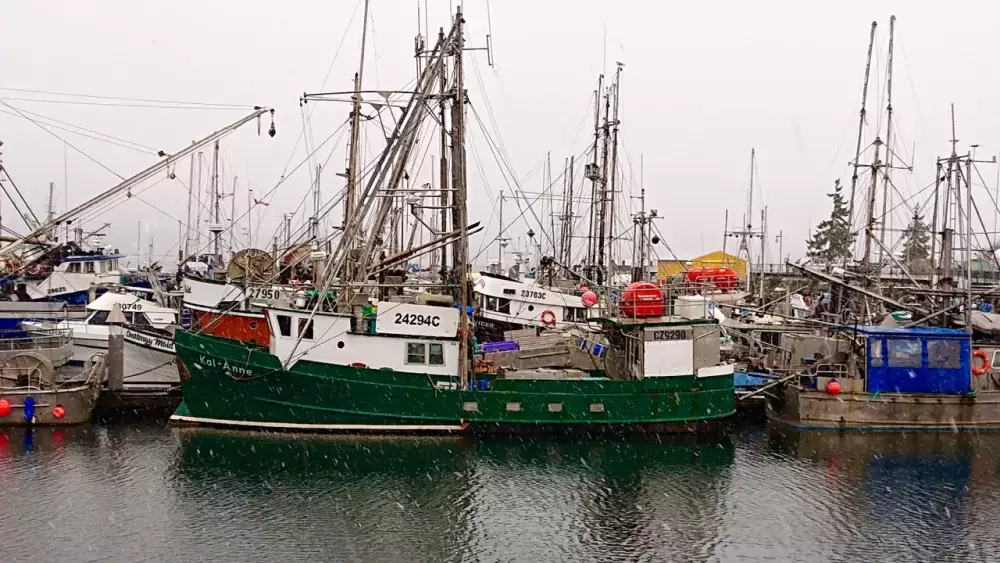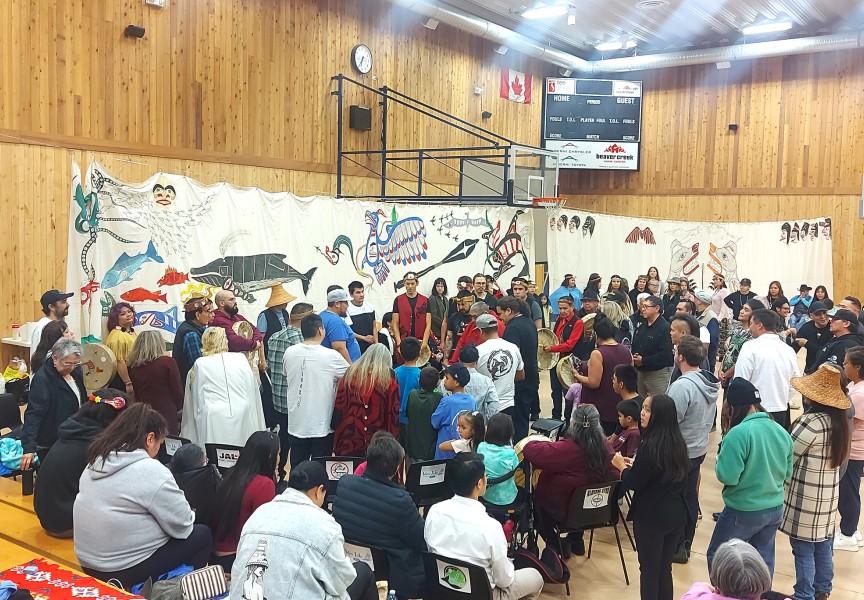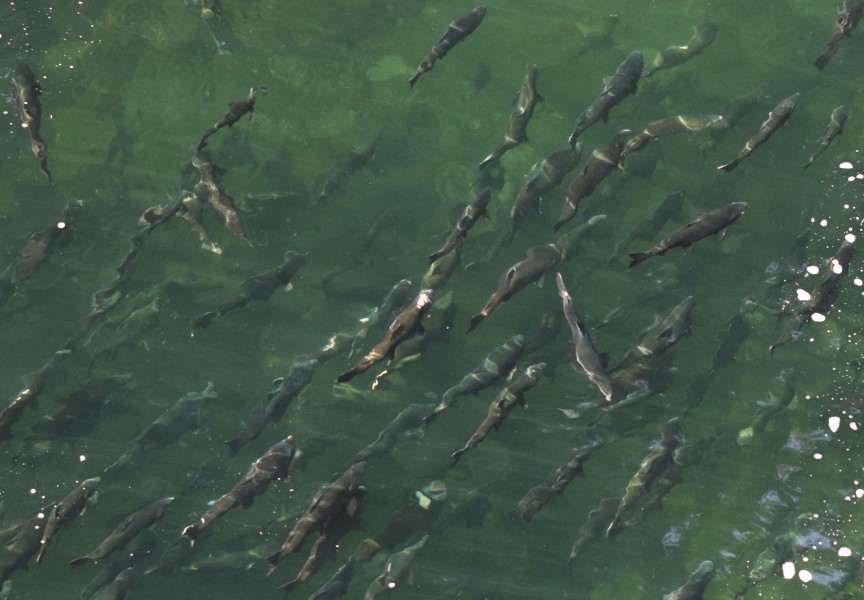B.C.’s commercial salmon fleet has been reduced to a fraction of its size 30 years ago, starved by catch allocations kept artificially low according to the union.
After the United Fishermen’s and Allied Workers Union-Unifor issued what amounts to an SOS for the West Coast commercial fishing industry, Ottawa has yet to respond, said Joy Thorkelson, union president.
“The DFO decisions don’t look like they benefitted the stock, but they did create a situation where there is a lack of resilience in the fleet,” she said. “That’s disastrous when we come to something like the 2020 outlook, a situation of little to no returns on some parts of the coast.”
Thorkelson drew on DFO’s own data and U.S. research to show that the main commercial salmon species — pink, chum and sockeye — were stable while the government slashed catch allocations starting in the 1990s without justification.
The union — which has seen its membership plunge to 5,000 from 25,000 workers — is using the evidence to make a case for emergency compensation to ensure the industry can survive.
Salmon used to support the largest fishery on the coast, but the catch is now exceeded by groundfish. Hopes pegged on encouraging returns forecast last year were instead dashed by widespread closures and a season that was nothing short of disastrous, the worst in 50 years. Catches were just eight percent of a 20-year average.
“The federal government created a commercial fishing economy so precarious that when the salmon collapsed this year, the industry went with it,” said Jerry Dias, Unifor national president. “Commercial salmon fishing may never recover.”
As grim as that outlook may be, the union feels Ottawa needs to act. Instead, the silence is deafening. Thorkelson said there can be only one reason why the government hasn’t responded.
“We can only assume that DFO is completely writing off the B.C. salmon industry, not speaking to anyone and letting it die,” she said. “If 2019 becomes the new reality over the next three years, how does DFO propose to deal with allocation? What do all the Aboriginal and non-Aboriginal fishermen do with all their gear and all their boats? How do you keep fishermen in this industry viable?”
While acknowledging that climate change is probably to blame for the 2019 West Coast salmon fishery collapse, the union maintains that government mismanagement has left the fleet unable to adapt to emerging challenges.
“I’ve never seen it like this in my 74 years,” said Thorkelson.
“It could be a whole number of things we don’t know about,” she added, listing viruses, a pinniped predation or freshwater habitat issues. “All this can be wrapped up in climate change. Something happened in the ocean and nothing came back.”
Salmon can be considered a bell weather for other marine species, so the solution is not as simple as diverting to other fisheries as they have done in past seasons, Thorkelson said. Ocean acidification is softening the carapaces of Dungeness crabs, she noted, citing the results of a U.S. study released last month.
Not everyone agrees with the union’s contention that salmon stocks have been stable for 63 years. Chinook numbers, for example, began dropping in the 1980s when conservation measures were ramped up.
Candace Picco, a T’aaq-wiihak biologist, said climate change is making it difficult to rebuild stocks, even as different management measures are put in place to decrease the harvest.
"To be fair, it was mismanagement by DFO that led to the decline and now climate change is making it more difficult to rebound from that,” she said.
The report cited by the union doesn’t mention chinook and coho, the two Pacific salmon species that have undergone steepest declines, Picco noted. That’s a glaring omission from where she stands.
"Obviously, on the west coast of the Island, where chinook are down to between one and five per cent of what they used to be, in some rivers, there’s a serious problem,” Picco said.
As well, during the same time frame cited by the union, DFO was supposed to grant salmon catch allocations to First Nations in keeping with explicit directives from the Supreme Court of Canada.
“It was established by the courts that First Nations have priority access,” Picco said. “We’re not seeing that.”
Thorkelson said she’s aware the data set is not comprehensive as others have pointed out.
“I can only use the figures that DFO supplies,” she said.
Whichever way data are interpreted, a grave reality remains: An industry that should be on life support has seen no love from Ottawa. DFO stated after last season that it empathizes with the economic impact of low returns but doesn’t have the mandate to provide financial relief.
“It’s not a resilient fleet,” Thorkelson said. “It’s been held at a depressed level, probably for conservation, but that hasn’t proven to be effective. Now they’re ignoring their responsibility and ignoring discussions on what’s going to happen.”
About 60 percent of the union’s membership is comprised of Indigenous commercial fishermen, she said. Among seiners and shore workers, Indigenous participation is as high as 80 percent.
The federal government should provide fishermen with disaster assistance to bridge the financial burden and help them remain in the industry, the union contends. That could involve waiving small craft moorage fees, for example. Since the loss of income means many fishermen cannot afford to maintain their vessels, the government could provide low-interest loans as well. Those who were unable to earn sufficient hours last season should still be able to collect maximum employment insurance benefits, Thorkelson said.
Without assistance, she sees the industry being “ghettoized” and going the way of sharecropping, with fewer owner-operators and licences sold to corporations instead.
Why would the Canadian government turn its back on the West Coast fishery? Thorkelson said they no longer hold collective strength.
“Aboriginal and non-Aboriginal, they need to be getting together and speaking with one voice,” she concluded.







